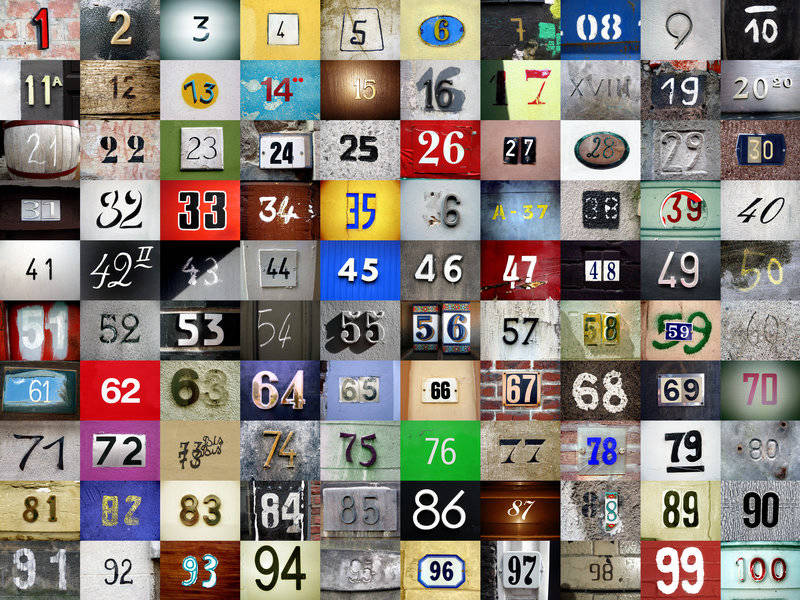Numbers in French should be easy, right? After all, they’re written the same: you really just have to memorize 1–19 and then add 1–9 to 20 to make 21, 22, etc. right? Not quite.
Far from being the universal language, the French number system is surprisingly complex. While French pronunciation is always a challenge for English speakers, certain numbers also have some implicit math within the name, meaning a simple two-digit number can end up being a whopping eighteen letters (and three dashes) long. Luckily, there is some logic to the number system, which once you see it spelled out in English becomes easier to remember.
Why bother with French numbers?
Getting French numbers right is crucial if you’re planning to visit a French-speaking country. The following situations will definitely require you to be familiar with the French number system:
- In France, you may receive directions that include a certain amount of meters/kilometers or an address that includes numbers.
- Loudspeaker announcements at train stations usually include the (often four-digit) train number, platform, and time of departure using the 24-hour clock (“military time”).
- If you’re ever required to give your personal information, you have to be ready to specify your year of birth.
- If you make any new French-speaking friends (or love interests), you’d better be ready to give them your telephone number!
Compound Numbers
Let’s start from the basics. For sound clips and a full list of numbers, see this guide.
| English | French | Approx. Pronunciation |
|---|---|---|
| zero | zéro | (sero) |
| one | un | (uhn) |
| two | deux | (duh) |
| three | trois | (trwah) |
| four | quatre | (katr) |
| five | cinq | (sank) |
| six | six | (sees) |
| seven | sept | (set) |
| eight | huit | (weet) |
| nine | neuf | (nuff) |
| ten | dix | (dees) |
| eleven | onze | (ohnze) |
| twelve | douze | (dooze) |
| thirteen | treize | (trez) |
| fourteen | quatorze | (katorz) |
| fifteen | quinze | (kanz) |
| sixteen | seize | (sez) |
| seventeen | dix-sept | (dees-set) |
| eighteen | dix-huit | (dees-weet) |
| nineteen | dix-neuf | (dees-nuff) |
Notice that after seventeen, rather than having unique numbers, French uses “ten-x.”
Next, let’s take a look at the multiples of ten. This is where things start to get a bit strange. You’ll notice that after sixty, French uses chunks of smaller numbers to refer to larger numbers.
| English | French | English Translation |
|---|---|---|
| twenty | vingt | twenty |
| thirty | trente | thirty |
| forty | quarante | forty |
| fifty | cinquante | fifty |
| sixty | soixante | sixty |
| seventy | soixante-dix | sixty (“and”) ten |
| eighty | quatre-vingts | four twenties |
| ninety | quatre-vingt-dix | four twenties (“and”) ten |
| one hundred | cent | one hundred |
Fun fact: When you refer to a percentage such as 50 percent in French (cinquante percent), you’re literally saying “50 per 100.”
Okay, now that you’ve got the multiples of ten, we can start to apply a few rules to get the numbers in between.
1. For 21, 31, 41… 71, there is an “and” (et) pronounced, but no dashes: vingt et un, trente et un.
2. For numbers between 20–60, dashes are used to add 2–9: vingt-deux, vingt-trois, etc.
3. For 71–79, since we started with “sixty (and) ten,” continue that pattern by using “sixty and eleven” to form soixante et onze. Remember that the “and” is only pronounced for 71; after that it goes back to dashes: soixante-douze. This does mean that for 17–19 the English translation can be a bit confusing (literally “sixty-ten-seven,” but think of it as “sixty plus ten and seven”): soixante-dix-sept, soixante-dix-huit, etc.
4. For 81–89, we start with “four twenties.” 81 uses dashes instead of “et un” to form “four-twenty-one”: quatre-vingt-un. Then continue from there: quatre-vingt-deux. Note that even though you’re talking about multiple “twenties” from a mathematical perspective, the word “twenty” only needs to be pluralized for the number eighty: quatre-vingts.
5. 91–99 is a mixture of the rules we saw for the 70s and 80s; namely, it uses dashes instead of “et” to form 91 (like 81) and it adds 11–19 to 70 (like the 70s): 91 = quatre-vingt-onze, 92 = quatre-vingt-douze.
Congratulations! You’ve reached 100!
Why does French seem to have a combination of a Roman base-ten system and a base-20 system like the Celts and Danish? Well, there are some interesting speculative possibilities, including the reasoning that the French used all digits (fingers and toes, that is) to count, rather than just hands. You can read more about the history here.
Luckily, after 100 the number system behaves itself a bit more. A few important things to note are:
1. “Hundred” needs to be pluralized if there are more than one (like we did for “twenties” = vingts), so “two hundreds” is deux cents.
2. When talking about numbers in between hundreds, you do not need to pluralize the number or use et for 101, 201, etc.: 151 = cent-cinquante-un, 299 = deux-cent-quatre-vingt-dix-neuf.
After that, it’s smooth sailing!
| Number | French |
|---|---|
| 1,000 | mille |
| 10,000 | dix mille |
| 100,000 | cent mille |
| 1,000,000 | un million |
| 2,000,000 | deux millions |
| 1,000,000,000 | un milliard |
How to Read Phone Numbers
French speakers generally give their phone number in chunks of two digits at a time. Compare this with the USA, which usually gives a three-digit area code, followed by three digits, then four with pauses (–) in between. In French, these two-digit chunks are pronounced as two-digit numbers.
USA: (555) 555-5555
Pronounced: five five five – five five five – five five five five
France: 05 55 55 55 55
Pronounced: zéro cinq – cinquante-cinq – cinquante-cinq – cinquante-cinq – cinquante-cinq
Country Code and Area Codes
Every country has a country “calling code” that is required when dialing from one country to another. The country code for the USA is “+1.” If dialing a French number from a non-French number, the prefix “+33” is required. You can either hold down the “+” sign on your mobile phone, or dial “00” before “33.”
Like the USA, France uses a regional area code or indicatif téléphonique, to denote geographic location or special type of phone number (like 1(800) or (888) in the USA). The most common prefixes are:
01 Île-de-France 02 Northwest France 03 Northeast France 04 Southeast France 05 Southwest France 06 Mobile phone services 07 Mobile phone services
So, if you were calling a French number from southwestern France from your cell phone with an American SIM card, you would dial the following:
+33 05 55 55 55 55
From a landline:
0 33 05 55 55 55 55

What’s the payoff for all of this hard work? Now you can understand this silly joke circulating the internet! Make sure to read it out loud using the pronunciation guide above:
An English cat, a Spanish cat, and a French cat are in a swimming race. The English cat’s name is One-two-three. The Spanish cat’s name is Uno-dos-tres. The French cat’s name is Un-deux-trois.
The Spanish cat came in first, the English cat came in second, but the French cat was nowhere to be found. The Un-deux-trois quatre cinq.
Hope it was worth it! To get quizzed on French numbers in an engaging way, sign up for Lingvist’s online French course today.


